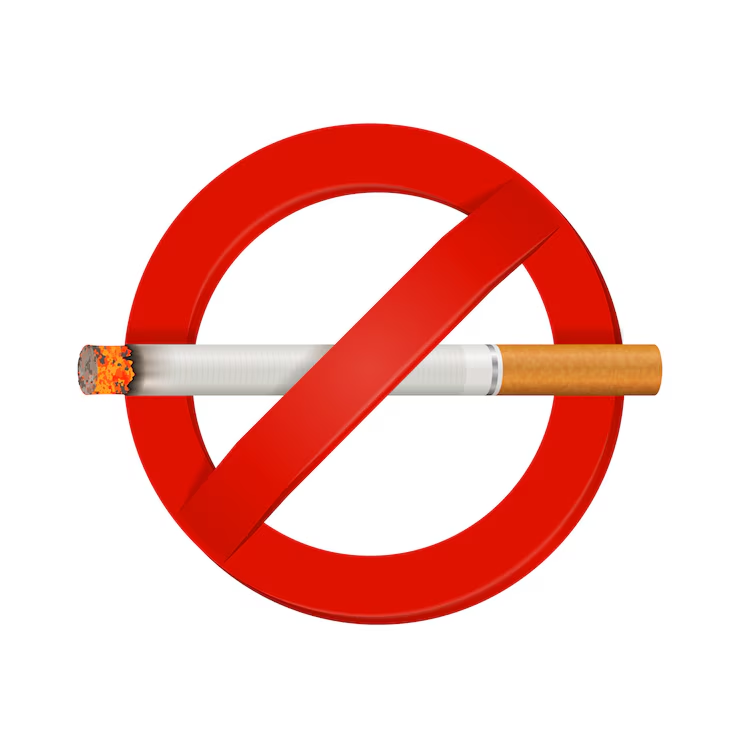Smoking continues to be the leading cause of preventable diseases and deaths globally, claiming millions of lives each year. In the United States alone, smoking is responsible for more than 480,000 deaths annually. Beyond mortality, smoking significantly impacts the overall health of smokers and those exposed to secondhand and thirdhand smoke. Given these staggering statistics, quitting smoking offers tremendous health benefits, regardless of age, the amount of smoking, or how long a person has been smoking. But how does one quit? Effective Ways to Quit Smoking
Recent scientific studies have highlighted several methods that can help smokers effectively quit. This article will take you through the top three smoking cessation strategies based on the latest research, along with an exploration of behavioral therapies and other potential techniques. Whether you’re someone who’s looking to quit or a loved one trying to support a smoker, these strategies provide actionable insights into how to kick the habit for good. Effective Ways to Quit Smoking
Understanding Smoking Cessation
Before diving into the specific strategies, it’s essential to understand what smoking cessation means. Smoking cessation refers to the process of quitting smoking, whether abruptly or gradually. It’s not just about stopping the physical act of smoking; it’s about overcoming the addiction to nicotine—a powerful chemical found in tobacco that hooks users by triggering the release of dopamine in the brain. Effective Ways to Quit Smoking
The process of quitting smoking can be incredibly challenging due to the withdrawal symptoms that arise when nicotine intake is reduced or stopped. These symptoms include cravings, anxiety, irritability, and sometimes even depression. However, recent studies and trials have shown that there are ways to ease these symptoms and increase the chances of successful cessation. Effective Ways to Quit Smoking

Medications for Smoking Cessation
Recent research by the Cochrane Tobacco Addiction Group (CTAG), a leading organization in tobacco addiction studies, has identified varenicline, cytisine, and nicotine e-cigarettes as three of the most effective smoking cessation aids. Effective Ways to Quit Smoking
Varenicline: A Powerful Prescription Option
commonly sold under the brand name Chantix, is a prescription medication that has been shown to be highly effective for smoking cessation. Varenicline works by targeting nicotine receptors in the brain, reducing cravings and withdrawal symptoms while also blocking the pleasurable effects of nicotine from cigarettes.
Cytisine: A Plant-Based Alternative
Cytisine, another prescription option, is a plant-based drug that has been widely used in Europe and Canada. Like varenicline, cytisine helps reduce withdrawal symptoms and cravings. It has garnered attention for its effectiveness, and U.S. studies are being conducted in hopes of gaining FDA approval. Cytisine offers a natural alternative to varenicline and has shown fewer side effects in clinical trials.
Nicotine E-Cigarettes: A Controversial but Effective Solution
E-cigarettes containing nicotine have also shown promise in helping people quit smoking. The Cochrane Review, a living systematic review that updates monthly, has found high-certainty evidence that nicotine e-cigarettes are more effective than traditional nicotine replacement therapies (NRTs) such as patches or gum. By delivering controlled doses of nicotine without the harmful chemicals from burning tobacco, e-cigarettes offer a harm-reduction approach to quitting smoking. However, while they may be effective, more research is needed to fully understand the long-term effects of e-cigarettes.
Combination Therapies
Researchers suggest that combining medications with behavioral therapy can significantly improve the chances of successfully quitting smoking. Behavioral therapies can provide the psychological support needed to complement the physical effects of medications, increasing the likelihood of long-term success.
Behavioral Therapies: A Holistic Approach to Quitting
Smoking is not just a physical addiction to nicotine—it’s also a deeply ingrained habit, often tied to specific triggers like stress, social situations, or certain routines. Behavioral therapies aim to address these emotional and psychological aspects of addiction.
According to a 2021 CTAG overview, behavioral therapies can increase quit rates even without the use of medications. These therapies involve strategies to change the behaviors associated with smoking, such as avoiding triggers and developing healthier coping mechanisms.
Types of Behavioral Therapies
Some commonly used behavioral therapies for smoking cessation include:
Cognitive-behavioral therapy (CBT):
CBT helps individuals recognize and change negative thought patterns and behaviors associated with smoking. By challenging the automatic thoughts that lead to cravings, smokers can learn to respond differently when they experience triggers.
Motivational interviewing:
This counseling technique focuses on increasing an individual’s motivation to quit by exploring their personal reasons for wanting to stop smoking. It encourages individuals to make the decision to quit on their terms, fostering a sense of empowerment.
Mindfulness-based therapy:
While the research on mindfulness for smoking cessation is mixed, some studies suggest it can help people become more aware of their cravings and resist the urge to smoke.
Combining Behavioral Therapy with Medications
While behavioral therapies can be effective on their own, the CTAG review found that they are often even more successful when combined with pharmacotherapy, such as nicotine replacement or medications like varenicline or bupropion. The combination provides both psychological and physiological support, tackling addiction from multiple angles.
Financial Incentives: A Powerful Motivator
Money talks—and it can be a strong motivator to quit smoking. Financial incentives have emerged as an effective tool in smoking cessation programs. Studies have found that offering individuals financial rewards for remaining smoke-free increases their likelihood of quitting.
How Financial Incentives Work
Incentive-based programs typically involve offering smokers cash rewards for milestones such as remaining smoke-free for a certain number of days, weeks, or months. These programs tap into the natural human desire for immediate rewards and can provide the extra push needed to overcome withdrawal symptoms and stay on track.
A 2021 review revealed that these incentives can be especially effective when combined with counseling or other behavioral support. While financial incentives alone may not be enough for long-term cessation, they can significantly boost success when integrated into a comprehensive quit-smoking strategy.
Additional Smoking Cessation Methods
Beyond the top three strategies, several other approaches may help individuals quit smoking.
Antidepressants: The Role of Bupropion
Bupropion, an antidepressant medication, has been shown to help some individuals quit smoking. It works by reducing the intensity of nicotine cravings and withdrawal symptoms. However, it does come with potential side effects, including psychiatric concerns, so it’s essential to consult a healthcare provider before starting treatment.
Nicotine Replacement Therapy (NRT)
Nicotine replacement therapy (NRT) products, such as nicotine patches, gum, lozenges, and sprays, have been around for decades and remain a popular smoking cessation method. These products deliver controlled doses of nicotine to the body, helping to reduce cravings and withdrawal symptoms while avoiding the harmful chemicals found in tobacco smoke.
While single-form NRT can be effective, the CTAG review found that using dual-form NRT—such as combining a patch with gum or lozenges—can be even more successful in helping smokers quit.
E-Cigarettes and Heated Tobacco Products
As previously mentioned, e-cigarettes have been shown to be more effective than traditional NRT in some studies. However, the long-term safety of e-cigarettes is still under investigation. Heated tobacco products, which heat tobacco rather than burning it, have also been marketed as a less harmful alternative to traditional smoking. However, the evidence on their effectiveness as a smoking cessation tool is still limited, and more research is needed.

Support from Dental Professionals
Did you know that dental professionals can play a role in helping you quit smoking? According to the CTAG team, there is moderate-certainty evidence that when dental professionals provide behavioral support and pharmacotherapy, the chances of quitting smoking increase. While the evidence is still emerging, it suggests that your dentist or dental hygienist could be an important ally in your journey to quit smoking.
The Health Benefits of Quitting Smoking
The health benefits of quitting smoking begin almost immediately after you stop. Within just a few days, the body starts to repair itself:
- Within 20 minutes: Your heart rate and blood pressure drop.
- Within 12 hours: Carbon monoxide levels in your blood drop to normal.
- Within a few weeks: Circulation improves, and lung function increases.
- Within a few months: Coughing and shortness of breath decrease.
Long-term, quitting smoking reduces the risk of major cardiovascular events and diseases like cancer, stroke, and chronic obstructive pulmonary disease (COPD). It’s also associated with improved mental health, as quitting can help reduce symptoms of anxiety and depression. For individuals with mental health conditions, smoking cessation can be a critical step in their overall treatment and well-being.
Conclusion: Quitting smoking is one of the best decisions you can make for your health. Whether through medications, behavioral therapies, financial incentives, or a combination of all three, there are numerous ways to tackle nicotine addiction and successfully quit smoking.
While nicotine withdrawal can be difficult to manage, the benefits of quitting far outweigh the challenges. The scientific evidence supports that with the right strategies and support, quitting is achievable.
If you’re ready to take the next step in quitting smoking, consult with healthcare professionals, including your doctor, therapist, or even your dentist. They can guide you through the process and provide resources tailored to your needs.
Disclaimer
This article is for informational purposes only and should not be considered medical advice. Always consult with a healthcare professional before starting any smoking cessation program or taking medications. Your healthcare provider can help you determine the best course of action based on your individual health needs and smoking history.
Source: www.medicalnewstoday.com
Also read:
- The 3 Most Effective Ways to Quit Smoking: A Comprehensive Guide Based on Recent Scientific Evidence
- Scientifically Proven Home Remedies for Quick Weight Loss Without Diet or Gym
- Home Remedies for Relieving Allergy-Related Chapped or Dry Skin
- Coconut Oil and Its 10 Amazing Benefits: Nature’s Multi-Purpose Wonder
- Stress-Busters: Powerful Techniques to Reclaim Your Peace of Mind
